Australian Women Artists 1920–1950
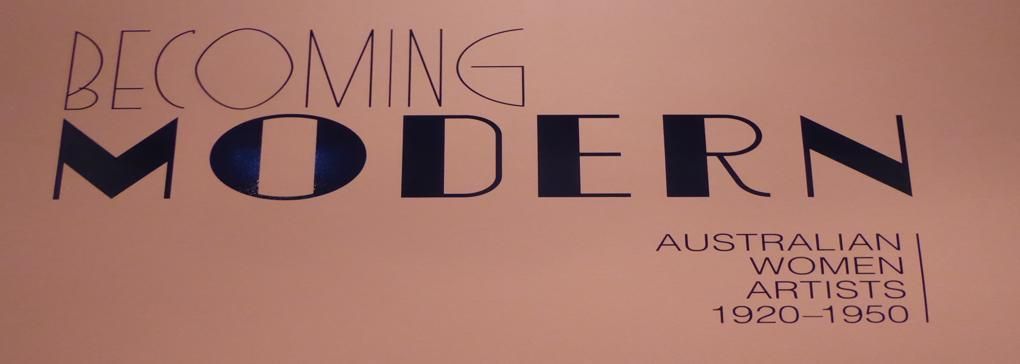
Becoming Modern, which I was lucky enough to see at the Ballarat Art Gallery in July, 2019, is a celebration of the tenacity and innovation of Australian women artists. The exhibition of 197 works, including paintings, prints, drawings and ceramics is taken almost exclusively from the Gallery’s collection. Let’s explore the history of the period and some of the female artists that made their mark.
During the early decades of the 20th century, women were becoming more visible in the arts in Australia than ever before. Increased access to art schools meant that more women artists were becoming professional artists, showing their work and achieving exposure through publications such as Art in Australia and its sister publication The Home.
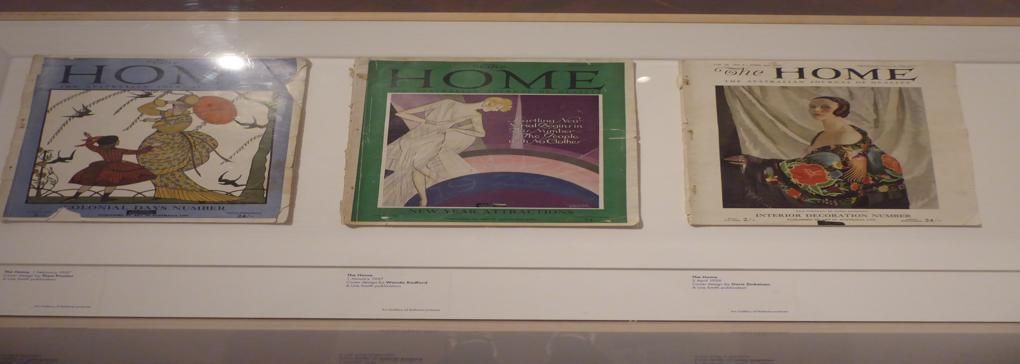
The early 20th century was also an era of travel which saw many women travelling to Europe to study at forward-thinking art schools in London and Paris and other cities. As a result, they played a key role in introducing concepts such as Post-Impressionism, Abstraction and Modernism to Australian audiences. Art schools for women started popping up in Australia.
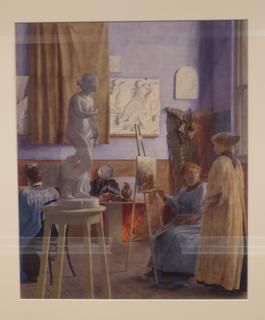
The art world in Australia was still dominated by men and women artists were still subject to prejudice from their male counterparts and critics. Women became renowned for their bold and ground breaking use of colour, line and form and bright new approaches to the depiction of Australian themes.
Here are just some of the art works on display.
The Frugal Meal (circa 1936) by Hilda Rix Nichols, captures very simple food, at a time when even bread and fruit was often in short supply or families had limited funds. The colours and nasturtiums add a vibrancy and softness.
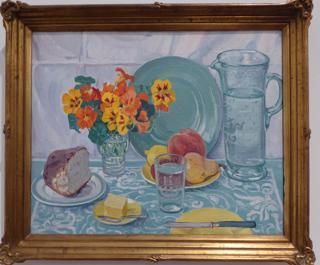
In The Masquerader Hilda Rix Nicholas depicted her sister Elsie for this portrait when the artist developed a fascination for exotic costumes, while travelling in Europe and Morocco.
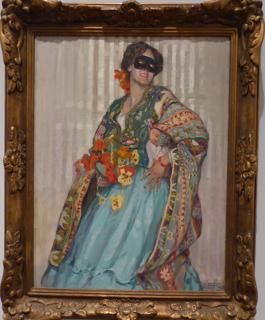
Women had a sensitivity for capturing trying times. Below Dora Meeson in Leaving the Front (circa 1918) highlights the pressure on women who were left in a vulnerable and emotional position once their men enlisted.
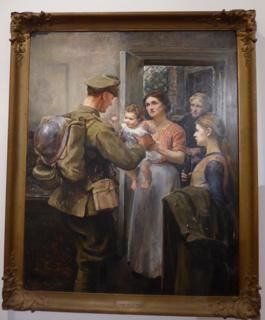
One of my favourites is A Gypsy Belle (circa 1896), by Josephine Muntz-Adams. The face shows fine detail, accentuated by the bold brush strokes of the background.
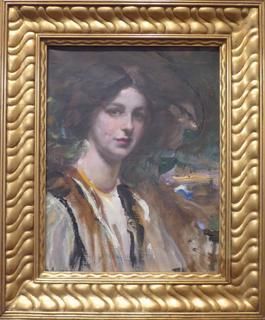
Women were originally denied from attending life drawing classes at art schools.
Pioneers such as the 19th century Heidelberg School protested and finally by the early 20th century it became acceptable to incorporate realistic naked figures in their works. Here we see Nude Study (1932) by Adelaide Perry .
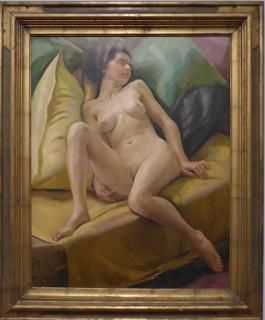
Nor was satire, as you can see here in Unk White’s ink on paper “The Stage Manager told me I looked good enough to eat!” (1934) – which would not be acceptable in today’s society.
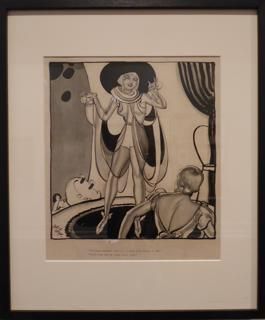
Most of us, especially Australians, are quite familiar with the works of Frederick McCubbin and Tom Roberts – members of the Heidelberg School. Less well known is Jane Sutherland – part of the same group. I am sure you agree that her oil, Obstruction, Box Hill (1887) equals any of the works accomplished by her male counterparts.
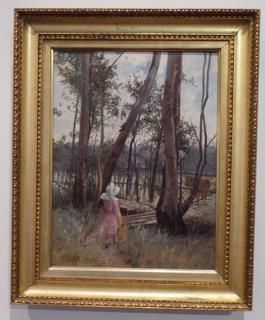
Marjorie Woolcock captured a sense of mystery and movement in this very Australian scene: Bush Track, Marysville (1945-55).
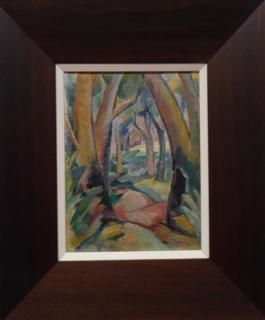
While Dorrit Black in a more modern style, captured the essence of a windy day at the beach in her lino cut, Wings (1927-28). We will look at Dorrit in more detail in a future blog.
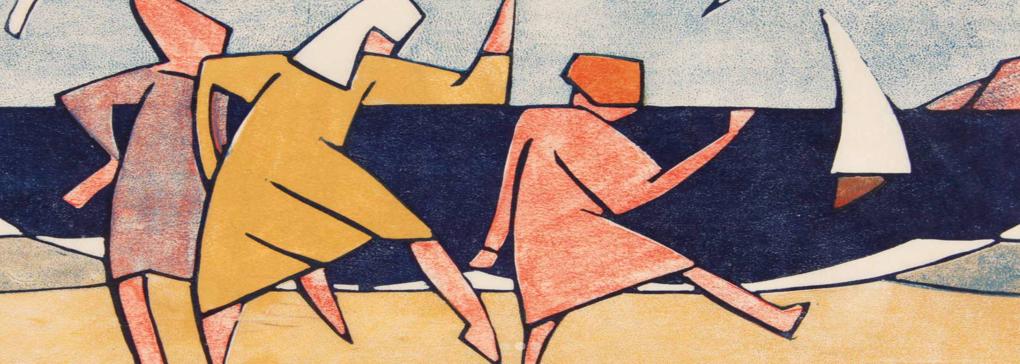
Animals were a popular subject and many women often depicted Australian fauna in ink drawings or linocuts or woodcuts.
Here is just a small selection, although difficult to see the detail, of artists which include Helen Ogilvie, Megan Thomas, Ethleen Palmer, Norbertine Bresslern-Roth and Margaret Preston.
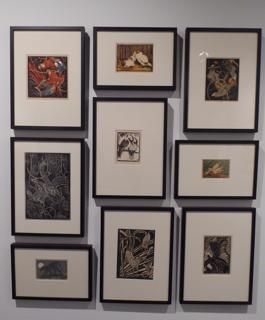
Here is a close-up of the centre piece, Kookaburras (1923), by Margaret Preston.
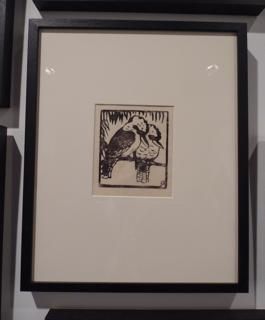
Works by Thea Proctor, Margaret Preston and Grace Cossington-Smith were dotted around the exhibition and we will take a close look at these three artists tomorrow.
Credits: Text and images taken from the exhibition at the Ballarat Art Gallery and interspersed with my own comments.
POSTSCRIPT FROM ANNE
Jane, Caroline and I decided before Jane and I went travelling in different parts of the world that we would continue to bring you the world wide range of topics that we like to cover. For the next couple of days you will be learning a little more about these Australian women artists before continuing to bring you the latest news from Europe and England.
In the meantime I am delighted to welcome a new subscriber Maria from Brazil. Thank you for joining our community and we do hope you enjoy our art blog.
After travelling around Cornwall for the past week and meeting 4,598 dogs I realise I will have to do a blog on the Dogs of England! Coming up soon. But first some more from Jane about Australian Women Artists.
